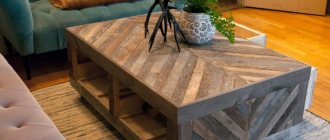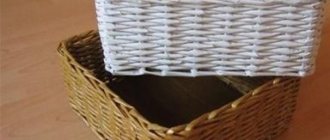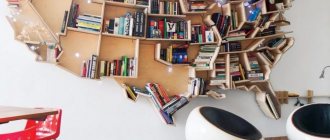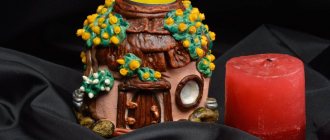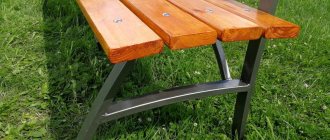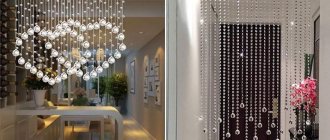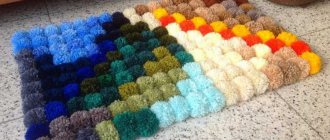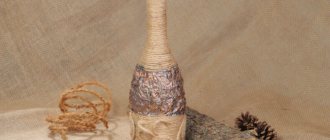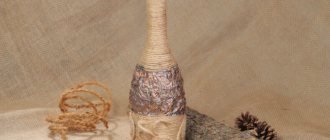Purpose of decorative pillows
Homemade pillows look great on sofas, will serve as an excellent addition to the interior of a child’s room, living room or bedroom, and will make a set of country furniture more comfortable.
A variety of pillows will find their place in any living space, on vacation, and even in a car.
A stylish hand-sewn pillow will be an excellent gift for a loved one, and making interesting options for interior pillows can bring additional income.
Deciding on the sizes
Of course, you should start by determining the size of the pillow. To make a product “for yourself” as accurately as possible, use the following recommendations.
- The height of the pillow is a calculated value. Depends on the size parameters of the person for whom it is intended. Measure the distance from the ear (visually a vertical line lowered from it to the shoulder) to the edge of the shoulder. The resulting value will be the optimal height of the product.
- Analyze the moment in which position you prefer to spend most of the night. If your favorite position is sleeping on your back, the pillow should be slightly lower and denser. For those who prefer to sleep on their stomach, a soft, low pillow is suitable.
- Another factor to consider is the characteristics of the mattress. The harder and denser the mattress, the lower the pillow under your head should be.
Reference! Making a pillow with your own hands is an excellent opportunity to try it on and ultimately adjust the product to your parameters as much as possible. Do not immediately sew up the hole through which you insert the filler. Tack it with running stitches, test the pillow by adding or subtracting the amount of filling. Once the ideal result is achieved, the hole can be stitched.
Types of decorative pillows
Interior pillows are in demand and popular not only as an element of room decor, but as a convenient household item.
Types of decorative pillows are divided into:
- classically shaped products for sofas that make relaxation more comfortable,
- rollers for beds and upholstered furniture,
- special pillows for the kitchen or dining room,
- floor pillows for a children's room or recreation area,
- small camping pillows that you can take with you outdoors,
- car pillows that make the trip more comfortable.
Pillows can have a classic or non-standard shape, depending on the purpose and imagination of the master. The size and design depend on the application of the decorative product.
Shape of pillows
The classic “European” shape of a pillow is considered to be square or rectangular. Such small things are called “dumkas”. The second most popular, eastern type is rollers. These pillows are shaped like cylinders and are used not only as headrests, but also as armrests. They are quite hard and tightly packed with filler. Round pillows (buffs) are also considered to come from the East. They are very rarely used for sleeping, but are ideal for decorating sofas and as soft seats on stools. They are usually decorated with numerous folds and intricacies of fabric. All other forms belong to the group of figured pillows. The most popular ones include pillows in the shape of letters and hearts. There was a real “boom” just a couple of years ago. Furry hearts with typical “love” inscriptions, stuffed with foam rubber, were sold in almost every home textile store.
Fabrics
To make decorative pillows, it is better to take dense fabrics:
- natural cotton and linen materials,
- denim or knitted fabric,
- different types of fur and satin,
- furniture fabrics for upholstery.
To create a good pillow with your own hands, it is important to choose the right material in terms of properties, color and texture, so that the decorative product complements your home interior.
- Do-it-yourself bead brooch - 105 photos and video description of how to quickly and easily weave a brooch
- DIY bird feeder - step-by-step master class and ideas for beginners and schoolchildren (155 photos)
Do-it-yourself beads: 120 photos and video description of how to weave beads
How to decorate a decorative pillow?
You need to approach the decoration of pillowcases responsibly. Even in cases where it is undesirable to use small fittings, you can decorate a decorative pillow with your own hands in a very original way so that it becomes a real highlight of the room. To do this, you can use traditional satin stitch or cross stitch embroidery, as well as decoration with ribbons and yarn. Needlewomen use lace, sequins, appliques, folds, puffs and much more to work on decorative pillows. The most patient can create entire embroidered pictures and use even small beads in their creation.
You need to approach the decoration of pillowcases responsibly
One of the most interesting and low-cost versions is to create a pillowcase from puffs. This is stitching the surface of the fabric in a certain order, which gives the product a certain volume. The work is performed according to a strictly defined form and in a clear order. This allows you to get a very interesting drawing.
Pillows made from puffs look very original, but you need to take into account that such a pillowcase will take much more time than the standard version. This must be remembered when distributing the fabric. The technique of creating puffs allows you to create various designs. These pillows look best in a classic interior or when decorating a room in a shabby chic style.
Embroidered paintings will make a decorative pillow not just a home decoration, but a work of art that will not leave guests indifferent
Ribbon embroidery will be no less interesting. Needlewomen know how to create real masterpieces from this simple material. Embroidered paintings will make a decorative pillow not just a home decoration, but a work of art that will not leave guests indifferent. Working with tapes does not present any difficulties. Therefore, this option is well suited even for beginner craftswomen. It is better to work according to a pre-prepared scheme. A suitable option can be downloaded from the World Wide Web.
Advice! Another simple but interesting decoration option is appliqués for decorative pillows.
They are well suited for both the living room and the children's room, the main thing is to choose the right motif. The easiest option would be applications in the form of emoticons or circles. Stripes in the form of letters and animals also look interesting. Flowers and elaborate patterns will look best in a classic style.
An interesting decoration option is appliqués for decorative pillows.
If the master is familiar with several design techniques, you can combine them. This will allow you to create the most interesting options.
Filler
To fill pillows, natural, synthetic non-woven materials and natural raw materials are usually used.
Natural padding includes:
- down and/or feather of a bird,
- animal fur.
Such a filler requires high-quality care, since small parasites can appear in it.
Herbal filling involves the use of various aromatic herbs. The service life of such a pillow is short, it must be protected from moisture. Plant content has a positive effect on human health.
Synthetic fillers include non-woven artificial materials:
- Do-it-yourself dolls made of fabric - 145 photos and video description of how to sew a beautiful doll quickly and easily
- How to sew curtains for the kitchen - a detailed description of how and what to sew curtains for the kitchen from (video + 135 photos)
Do-it-yourself felt toys: ideas, patterns, templates and felt patterns (135 photos and videos)
- holobiber,
- foam rubber,
- padding polyester,
- small silicone beads.
The advantages of synthetic padding are ease of maintenance and long service life.
How to decorate
Each housewife has her own ideas for decorating. Some people decorate with buttons, others with fringes. You can also sew on various laces, beads or rhinestones and make patterns out of them. The most original ways were to decorate with plant prints, lace or embroidery and appliqués.
Knitted roller under the neck or for hugging
Decorating a pillowcase with plant prints
Decorating with floral patterns involves transferring prints of fresh leaves or grass onto a pillowcase, creating combinations and patterns. To implement this idea you will need:
The process itself involves laying the plant on a cloth and covering it with baking parchment. Next, it is hit firmly and evenly with a hammer, which allows the plants to secrete juice, which is absorbed into the fabric and leaves a pattern on it. Such pillows require careful care. Pillowcases should be washed in warm water with a delicate cycle and detergent.
Lace, knitting and embroidery
This method is quite labor-intensive, but it will give the products a unique appearance and aesthetics. Knitted pillows have a certain advantage over sewn ones. Firstly, they are embossed, and secondly, all the seams are very easily masked in them. Knitting such a product yourself, of course, takes a long time, but making it from an old sweater is as easy as shelling pears.
Embroidery on pillows also requires skills and knowledge of what exactly you want to depict with threads. It could be any patterns, flowers, or just chaotic straight or broken lines. It's even easier with lace. You just need to buy them or detach them from old products and attach them to pads. Lace can be made from old tulle.
Newborn pillow
How to properly sew an applique onto a decorative pillow
Also quite an interesting type of jewelry. Pillows with appliques can be used not only for decoration, but also for sleeping due to the fact that this decoration sits very tightly on the cover or pillowcase. The step-by-step algorithm of actions here is something like this:
In conclusion, I would like to say that sewing a pillow with your own hands is not so difficult. After completing any master class on sewing pillows, even a novice craftswoman will be able to learn how to make both simple pillows for sleeping and sofa decorative items, pillows and crib bumpers for babies and newborns.
Source
Sewing things for the interior with your own hands is a fun and interesting job. Every housewife dreams of a cozy design in her own apartment. If you don’t have enough money, then imagination and enthusiasm always come to the rescue, as well as a needle and thread.
Beginning of work
The first step in creating an interior pillow is to think about its purpose and appearance.
Having decided on the application, design, color and size of the future product, it is important to choose the right fabric for sewing.
The material should be in harmony with the rest of the home furnishings and correspond to the intended sketch.
How to sew a sleeping pillow with your own hands
A hand-sewn pillow will meet all the quality standards of a housewife and will save money on purchasing store-bought analogues. After preparing the appropriate filler and accessories in the form of needles, threads and fabric for the bedspread, you can begin to work. First, you need to determine the size of the future product. Standardly it is 70 by 70 cm, and according to the European standard - 70 by 50. If you deviate from these standards, you will also have to sew a pillowcase yourself.
The process of sewing a decorative pillow in the shape of a flower
The step-by-step sewing instructions are as follows:
- The canvas is laid out on a flat table or on the floor. The fabric is measured. For example, if the future pillow is 50 by 50 cm, then you should measure 50 by 100 cm. Draw marks and lines with chalk, add 2 cm allowances to them on each side. The result will be a cut of 54 by 103 cm;
- Fold the rectangle in half and iron. Pin future seams with sewing pins and baste;
- Sew along the lines marked earlier for the seams. Previously, this was done by hand, but now machines are used;
Decorative item from an old sweater
- Sew the corners, making small roundings. Leave 10 centimeters of unsharpened space on one side. Overcast the napkin and secure the seams by cutting the threads;
- Turn the base inside out and straighten all the corners, ironing them;
- Fill the product with the selected filler through the gap left without a seam;
- Sew the seam in any way, making it hidden. Beat the product with your hands.
Breastfeeding pad pattern template
Features of work
When sewing pillows, it is important to take into account the small nuances of working on this decorative item. The product consists of a pillowcase, filling and decorative cover. The top cover is made so that it is easy to remove for cleaning or washing.
When cutting, the size of the cover should be made a couple of centimeters larger than the pillowcases.
When considering how to sew decorative pillows with your own hands, it is worth considering these features of the work.
Preparatory work
The history of the appearance of the pillowcase is inextricably linked with the creation of the first pillow.
Interestingly, in ancient times people preferred to sleep on stones or logs wrapped in leather. Later, hay and dried flowers were used as filler, and pillowcases were made from coarse fabric. In the Middle Ages, noble houses were decorated with many pillows. The quality and decorative pretentiousness of the pillowcase testified to the wealth of the owners. Variety of decorative pillowcases
Made from the finest linen and natural silk, inlaid with gold and decorated with precious stones, they successfully complemented the luxurious setting. Today we put high quality, comfort, harmony above pretentiousness. Modern models successfully combine practicality and aesthetics. To sew a set of covers for decorative pillows, you only need the ability and desire to transform your home.
Novice craftswomen, not fully understanding how to make a pillowcase, often make a number of mistakes:
- When preparing a pattern, the shrinkage of the material after washing is not taken into account. This applies to fabrics with a high content of natural fibers.
- Pattern without allowances. When cutting the material and before sewing the parts together, you should make a small margin - seam allowance.
- If you choose a wrap-around cover model, you need to accurately measure its grip so that in the future the pillow does not “peek out” from the pillowcase.
General tips for preparing fabric
If you decide to sew a pillowcase with your own hands, one copy is not enough. It is better to prepare a beautiful set so that you can change the covers on occasion, setting the mood and observing hygiene rules. To make the product easy to remove, it is recommended to choose a zipper to match the color of the pillowcase as a fastener. Feel free to use ready-made ideas from experienced craftswomen, complementing them as you wish.
To sew a pillowcase with your own hands, you will need a little time and even less expenses for purchasing the necessary material. In a couple of evenings you can create a collection of covers for decorative pillows, plunging into the fascinating world of creativity.
Shiny pillowcase with elements of rhinestones, gold threads and lace ornaments
Choosing fabric. Natural materials, cotton or chintz, are the best solution from an environmental point of view.
But we remember that pillow covers are indispensable in the process of creating an exclusive design.
Pillowcases for decorative pillows
The luxury of silk or velvet in deep shades, stylish denim, rough textured linen can enhance the effect, adding elegance and stylish sophistication to the interior.
- We decorate the covers. The highlight of hand made products is their originality. Each item bears the imprint of the master’s soul, which is embodied in the author’s idea and skillful decoration. Pillowcases are no exception. Embroidery, ribbons and ruffles, rhinestones, beads, lace and applique, contrasting combinations of shades and textures - all this will help in creating a textile masterpiece.
- We take the measurements correctly. Beginner craftsmen just need to measure the pillow for which the pillowcase is intended, and then add a couple of centimeters for allowances. A series of buttons and ribbons are used as a fastener, but it is more practical to sew in a zipper.
Fabric selection
Having mastered the basics of sewing, gradually complicate the work by combining fabrics, creating your own design, and coming up with a new ornate decor. This exclusive pillowcase will be a wonderful gift for your mother, friend or colleague.
Work on creating a decorative pillow
It’s better to prepare everything for work in advance.
In addition to the fabric, you should stock up on:
- scissors,
- life-size patterns,
- a piece of dry soap or chalk,
- needles,
- threads,
- sewing machine,
- decorative elements.
The procedure for making a simple interior pillow
It is recommended to wash new fabrics before cutting parts, as they may shrink.
- Having placed the pattern on the wrong side of the material, it should be traced along the contour. For convenience, the pattern should be secured with pins.
- The parts are cut with scissors, taking into account the margin for seams.
- Having folded the parts of the product with the right side inward, sew the seams. It is better to sew using a sewing machine, but you can do the work by hand.
- One side is not completely stitched; the product must be turned inside out and ironed.
- Decorate the pillow, fill it and sew up the seam.
A simple square pillow will not require much effort or time to work. A master class on making decorative pillows with your own hands can be easily found online and in video format.
How to sew a pillow with a snap closure
For a sofa cushion without piping or cord trim around the edge, a zipper along the seam will be too bulky. Here it is best to use buttons or simply sew up the open area with hidden stitches. Buttons sewn along the edges of the unstitched area will make it easier to remove the pillow from the cover if you need to wash it. To make a cover with snap closure, you will need fabric, snaps and the usual set of tools and sewing supplies.
Cutting out pillow details with buttons
Make a paper pattern. When cutting out parts from fabric, add an additional 3 cm for fastening along one edge of both parts of the cover.
Folding the edges
Fold the edges of both pieces, where there is a large seam allowance, to the wrong side by 1.5 cm and press. Fold it again by 1.5 cm. Pin, baste and sew with blind stitches along the edge of the hem. Remove the basting.
Stitching parts
Place the pieces right sides together, aligning the folded edges. Pin, baste and machine stitch 5cm on both ends of the folded edges. Remove the basting. Pin, baste and stitch the other sides of the cover, leaving a 1.5 cm seam allowance. Remove the basting.
Sewing buttons
Sew the buttons in pairs along the front side, along the edges of the left open area at certain intervals. Trim the fabric at the corners and also trim the seam allowances. Turn the cover right side out through the unstitched area. Iron your product well, tuck in the pillow, and carefully tuck in the corners.
Cushion
The furniture cushion that complements the sofa usually has a simple geometric shape. Most often it is a rectangle.
Such items are subject to wear and tear during use faster than the sofa itself. The opportunity to buy a similar pillow is not provided by furniture manufacturers.
Therefore, there is a need to sew such a pillow yourself. This is a simple job, most of the success of which lies in the correct selection of material for the cover.
If possible, the fabric should be found similar to the upholstery of the sofa. If there is no such fabric, then you need to think through the design of a new pillow so that it fits organically into the interior.
In any case, the texture should match the upholstery of the sofa, and the color should be in harmony with the design of the room.
The easiest way to copy a factory copy is to rip open the old one and measure the cover.
Using these measurements, draw a drawing, cut and seam the parts of the new product.
Where to start preparing for sewing
Master class with step-by-step photos of making a soft pillow in the shape of a flower
Even if a home craftswoman has little experience in sewing, she is able to master the technology of making pillows for a sofa: just use the recommendations of experienced needlewomen.
Preparation for sewing should begin by choosing the shape of the future pillow, size, material for production, and making a pattern.
If the shape and size are chosen arbitrarily, the selection of material must be carefully considered and a number of factors that may affect the results of the work must be taken into account. Do not forget that the pillow is decorative, which means it does not have to match the color of the sofa, armchair or the general decoration of the room.
It is considered in the interior of the apartment as an original decoration. At the same time, no one canceled the reference point to the overall interior.
Sewing a new cover for a sofa cushion
The choice of fabric will have its effect and be functionally useful or will remain only a way to diversify the color scheme of the room.
| Textile | Material characteristics |
| Cotton | Good air permeability Suitable for children's and bedrooms |
| Silk | Various bright colors Gives a feeling of coolness on hot days Decorates an adult bedroom, armchair, sofa |
| Leather | Durable Requires careful care (cleaning) Used for decorative finishing of pillows |
| Brocade | Elegant dense material Gives a feeling of wealth and respectability In children's pillows - only in the form of inserts |
| Velvet | Soft beautiful Makes the pillow look elegant Expert opinion Ekaterina Anatolyevna Smirnova has been engaged in interior design for 7 years, a professional architect With constant use and frequent washing, it wears out quickly and loses its appearance. |
| Calico | Dense, long service life Suitable for children's pillows |
| Fur | Soft, warm, “affectionate” material Requires constant cleaning or washing Accumulates a lot of dust May cause allergic reactions |
Popular articles Original collar with embroidery
To sew a pillow, you will need fabric and ordinary sewing accessories, to which, in addition to the filling, you can add decorative buttons.
Unusual handmade sofa cushion “Buttons”
By the way, you need to pay attention to the properties and characteristics of the material that is used as a pillow filler:
- must be hypoallergenic;
- moderately soft;
- easy to wash.
The right filling for sofa cushions
Attention! The filler should not lose its shape after washing. Practice shows: the most commonly used fillers for decorative pillows are: foam rubber, padding polyester, holofiber
Practice shows that the most commonly used fillers for decorative pillows are foam rubber, synthetic padding polyester, and holofiber.
There are other fillers used for stuffing pillows:
- cotton wool is not a very good filler: even if you stuff the pillow tightly, after a while it will fall off and the product will lose its shape;
- fur - convenient as stuffing for pillows that are used for games and sitting on the floor; they are comfortable and soft, but quickly accumulate dust; you will have to clean them quite often;
- silicone balls are a relatively new, convenient filler: does not cause allergies, easy to use, moderately soft.
Silicone bead filler for pillow filling
Decorative design
The most fun part of the creative process of creating an interior pillow is thinking about its design.
The easiest way is to use plain textured fabrics, the color of which matches the design of the room.
Pillows for a children's room often serve as an element of games. They should have bright colors and interesting design.
In children's design, bright applications on cartoon and fairy tale themes, original pillow toys in the shape of stylized animals or famous cartoon characters are appropriate.
You can make your own children's decorative pillows from a bright T-shirt with an original design that is too small for the child. Patterns for sewing funny children's pillows can be easily found online or drawn yourself.
You can complement the interior pillow with stylish appliqué, embroidery, satin ribbons, additional details in the form of an overhead bow or animal ears, fringe or frills.
External design depends on the skill and imagination of the craftsman, as well as on the purpose of the product.
Popular design trends allow the use of appropriate decorative methods: patchwork, stylized ornaments, thematic embroidery, tassels, bows, and so on.
The main thing is that the result of the work is a comfortable decorative pillow that harmoniously fits into the interior design.
Pillow decor options
Decorating is the most creative part of the process. Here you can fully express your imagination and create both laconic options for strict interiors and playful solutions for original furnishings. To decorate the case, both available materials and specially purchased fittings are suitable. Let's take a closer look at the popular ways of decorating pillows and analyze them step by step.
Color selection
First of all, you need to decide on a color scheme. Covers can be plain, variegated, or combine a moderate number of shades (two or three), selected according to the principles of analogy (ombre effect) or contrast. The latter option can be easily implemented in modular cases, the two parts of which are not sewn together, but connected by an insert. The shade must be selected based on the color scheme of the room in general and the furniture in particular. If textile decor should become a bright accent on the calm palette of the interior, then catchy colors are chosen: red, orange, yellow, green. Shiny golden, bronze, and silver cases that are covered with continuous rows of sequins will look stylish and original. If the pillow is just a neutral touch, then choose a calm shade: white, gray, blue, pink, brown, pastel colors. For outdoor decor (patio, gazebo, garden bench) choose more natural colors. For example, covers of crimson and brown tones with color gradation are in perfect harmony with the autumn landscape. They are complemented by a checkered blanket, picturesquely laid out on a bench, and now a cozy place in the open air is ready for reading a book with a cup of hot tea.
Patchwork technique
The patchwork technique, or patchwork, as it is sometimes called, allows you to create unusual decor from old things. These cushion covers will look homely and cute, but will only suit country-style interiors. For the work you will need pieces of fabric of different colors, decorated with ornaments and images. They are cut into squares of the same size, which are calculated from the parameters of the future pillowcase and the expected number of segments. These pieces are then sewn to each other to form strips. They are also connected to each other, resulting in a finished canvas.
Using the patchwork technique, you can not decorate the entire pillowcase, but only a separate part of it. For example, a combination of scraps of fabric with a variegated checkered pattern on one half will be organically combined with embroidery on a plain burlap on the second.
Application
The appliqué technique involves sewing individual pieces of fabric onto a canvas so that the result is a picture. The decoration method is somewhat similar to putting together a puzzle. The master has a large number of parts that need to be put together. The application is:
- Flat. This is a simple technique in which pieces of fabric are placed on the cover and sewn completely.
- Volumetric. A more complex technique, which is characterized by the presence of convex elements. For example, on a ballerina’s dress there are flounces, ruffles and bows with ribbons. Sometimes, to get additional volume, a soft filler is placed under a piece of fabric.
When working with fabric, “reverse” appliqué is encountered. A detail is cut out on the pillowcase cover according to the template. The edges must be stitched. Preferably by typewriter. Then a similar part is cut out from a piece of another fabric and sewn on the wrong side. It is best to work with a template prepared in advance.
Printing on fabric
Printing on fabric can be ordered in specialized salons, which, using special equipment, will accurately transfer the image onto the material. However, you can design a pillow cover yourself. You can try to transfer an image using a hot iron from a regular photograph, but the result will be dull and short-lived. It is much easier to work with a set of markers or spray paints and stencils. Drawings, as a rule, are chosen to be laconic, since only a master artist can display complex color transitions. The fabric must be laid out on a flat horizontal surface. For reliability, it is better to secure it with pins or press down the edges with something heavy. The area that should remain untouched is isolated using masking tape or cling film. Now apply the stencil and secure it. You can start coloring the image.
Lace
Covers with lace look very gentle and touching. This “feminine” option is perfect for shabby chic, Provence and blends seamlessly into children's bedrooms for newborns. As a rule, only a separate part of the cover is decorated with thin lace: a strip in the center, on one side, or paired openwork ribbons that “close” a neat pattern in the middle. Due to its special sophistication, this decoration is combined with covers in pastel shades. Contrast is appropriate in double pillowcases. They are sewn from a bottom plain layer of regular fabric and a top lace layer. This piece can be knitted by hand using a crochet hook and special yarn.
Knitted pillowcases
Knitted pillowcases bring warmth and comfort to the interior. To work, you will need yarn (about 500 grams for a medium-sized case), buttons, knitting needles or a crochet hook. We must not forget that natural threads will shrink a lot after washing. To prevent the pillowcase from becoming too small for the pillow, it is better to use mixed yarn. Mass knitting technique. Some prefer the laconic “braids” and “bumps” that are usually used to decorate homemade sweaters, while others prefer complex “web” patterns and, again, the patchwork technique, but in a slightly different guise. A pillowcase can be made from separately crocheted (usually crocheted) scraps of yarn of different colors. To keep the cover closed, they use buttons rather than zippers that blend seamlessly with the yarn.
Embroidery
The cover can be decorated with continuous embroidery or only part of it can be decorated. For the first option, the techniques of embroidery with threads (floss), cross and half-cross (tapestry) are suitable. You need to work either with burlap or with regular fabric on which the canvas is fixed. After the embroidery is completed, it is unraveled along the thread. For partial decoration, embroidery with ribbons, chenille or work using the satin stitch technique is suitable.
We use old clothes
Wonderful pillowcases are made from old jeans, shirts and sweaters. In the last two cases, the sleeves and lower part of the garment are cut off, leaving only the collar and the “chest” piece of fabric. There is no need to cut a shirt or sweater along the seam. The second part will become the back side of the case. Then the remains of the shirt are sewn together on both sides. A zipper is sewn to the bottom. The upper part, on which the collar is, is additionally decorated with a piece of fabric previously cut from the bottom to cover the empty neck. This detail can be sewn to the back of the shirt and simply smoothed out, since the seam on the front side will not look very aesthetically pleasing. You can put a scarf in the breast pocket. Covers are sewn from jeans using the same principle, only both legs are cut off.
Painting on fabric
Clothes (mainly sweaters and T-shirts) are increasingly being decorated with fabric painting. This is an excellent replacement for photo printing. In addition, the drawing will not be stamped; it can be “taken from your head.” For beginners, it is better to purchase special stencils. In any case, you will need a template, since it is difficult to correct errors with such a picture. This is not a pencil that can be easily erased with an eraser. The movements of the brush must be precise. Fabrics are painted with acrylic paints. They are presented in a wide range in artist shops. Different compositions are suitable for certain types of fabrics (thick, delicate). Before use, the material must be soaked in cold water for at least 1 hour and washed. Then the material is dried and laid out on a flat surface. Be sure to place a film under the fabric so as not to spoil the table. It is better to work with natural brushes of different sizes, so that it is convenient to paint both large and small details. Usually start from the top of the picture so as not to smear the drawing with your hand. After applying the image, it is fixed with a warm iron.
Buffs
Puffs are a special type of cover, the surface of which is decorated with a pattern of folds. The texture of the pillowcases just seems very complex. In fact, even a beginner can do the job. The main thing in the process of making puffs is the preparatory work. To get a beautiful symmetrical pattern, you need to correctly mark the points on a piece of fabric where the material will be collected and secured with thread. The markings are applied on both the back and front sides. In the second case, the places where the fabric tightens are masked with beads or buttons. Schemes of “grids” of buffs can be found in specialized magazines or on the World Wide Web.
Pillow decoration
To decorate pillows, they use the entire “arsenal” of needlewomen:
- Bows and ribbons. They combine beautifully with embroidery, openwork and look good as laconic decorations for plain cases.
- Buttons. Combined with knitting, applique, painting and puffs. Images painted with acrylic paints look original, where accent areas are filled with sewn buttons.
- Fringe. It is an integral part of Turkish pillows. As a rule, it is sewn along the contour of the cover and combined with tassels.
- Frills, ruffles. Combined with embroidery and openwork.
- Sequins. They are used in the same way as buttons to highlight accent areas. You can make a whole picture out of sequins. To make a continuous fabric, you will need parts of different colors and an embroidery pattern.
- Beads, beads. Used in embroidery.
In addition to the above decorations, cabochons, metal inserts, zippers, and decorative chains are used.
Photos of decorative pillows with your own hands
Tell your friends
